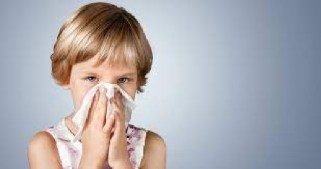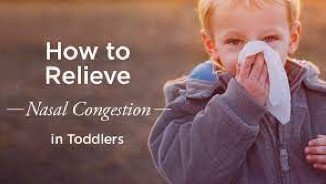By Registered Health Visitor – Julia Headland

It is at this time of the year particularly when I start to see parents and children suffering with conditions that affect the nasal passages and sinuses. There are many prescriptions and over the counter medications available to treat these conditions, however, there are ways to manage and even prevent these conditions before you may have to go down the route of medication. Some people may prefer a non-medical approach, or it could be that someone is unable to take medications because they may be contraindicated.
So, what exactly is the function of our nasal passages?
The nose filters, warms and humidifies air as it is inhaled. It also houses the olfactory receptors that provide a sense of smell. The nose and four paranasal sinuses provide a first line of defence against foreign particles such as dust, pathogens, and allergens. The nose is coated with mucus(mucosa) and this mucus serves to trap foreign particles and it also contains immunoglobin A (IgA)- an additional immunological defence against pathogens.
Effective functioning of the nasal system depends heavily on the health and barrier function of the mucosa, good functioning of the cilia and the presence of good quality mucus. Dysfunction of the nasal system through things such as upper respiratory infections or allergies, can cause symptoms such as congestion, rhinorrhoea (runny nose), facial pressure or headaches.
Common conditions of the nasal passages and sinuses.
Many conditions affecting the nasal passages and sinuses are caused by infection for example by the common cold, influenza and rhinosinusitis or allergens/ irritants for example, allergic rhinitis such as hay fever.
Although nasal infections are self-limiting, the symptoms can be uncomfortable and distressing, especially for children and young babies and children and babies can suffer five or six colds a year, pre and primary school children can suffer up to twelve colds a year!! (…and pass them on to the parents or carers!)
Allergic rhinitis that includes hay fever and allergies to other airborne particles is also very common and can cause very uncomfortable and troublesome symptoms. In the UK, allergic rhinitis affects 26% of adults, 19% of 13/14-year-olds and 10% of 6/7-year-olds but these numbers are rising.
So, what can we do about it? Of course, there are a plethora of over the counter and prescription medications that are available, but many people like to try and alleviate the symptoms naturally, if possible, maybe before they seek advice from their GP. Natural prevention strategies based on the mantra of ‘prevention is better than cure’ focuses on the avoiding causative factors and supporting the body’s ability to prevent /reduce any harm that might result from exposure.
Of course, it is important to seek advice from your GP or pharmacist if the symptoms are severe, worsen or are difficult to manage.
Avoidance measures depend on the issue; for allergic rhinitis, effective approaches include:
- Avoiding pollen, spores and other seasonal triggers and reducing exposure with eye protection
- Limiting house dust mites by vacuuming regularly with a filter, having hard floors, airing rooms, high temperature laundering (60 degrees Celsius), dust mite proof bedding, freezing, and washing soft toys and using air filters/ purifiers.
- Avoiding specific animals and using good pet hygiene.
- Good home hygiene to minimise conditions that encourage mould growth.
Avoidance of pathogens is primarily through effective hand hygiene, avoiding towel sharing, touching your eyes and nose, and avoiding toy sharing between children.
- Exclusive breastfeeding for babies under 6 months has been shown to reduce the risk of developing some common illnesses and is a useful way of improving babies’ general health and ability to ward off infections.
Good nasal hygiene through nasal irrigation involves flushing the nose and sinuses with saline. This helps to minimise the exposure to unavoidable causes of congestion by keeping the nasal passages free of irritants, allergens, and pathogens. It is a method particularly useful for young babies and children.

Alleviating nasal symptoms and discomfort
- Increase fluid intake: keeping hydrated is important to help thin the mucus.
- Steam inhalation – NICE guidelines suggest that steam inhalation may help to alleviate congestion. You could try running a hot shower whilst sitting in the bathroom.
- Rest and sleep to facilitate recovery from illness
- Vapour chest rubs (not nostrils)-please follow the manufacturer’s guidelines for usage.
- Nasal Irrigation: this serves to soften and rinse out excess mucus and can clean crusted nostrils. It can be especially useful for babies and children whereby medical products may not be recommended for children under the age of 12 years. Trials in allergic rhinitis have found that saline irrigation with specially formulated solutions may reduce symptoms, mucosal oedema, and inflammatory mediators, improve ciliary function, and support the healing of the nasal mucosa. the British Society of Allergy and Clinical Immunology (BSACI) recently described its usefulness for reducing symptoms and potentially, the need for drug treatment.
